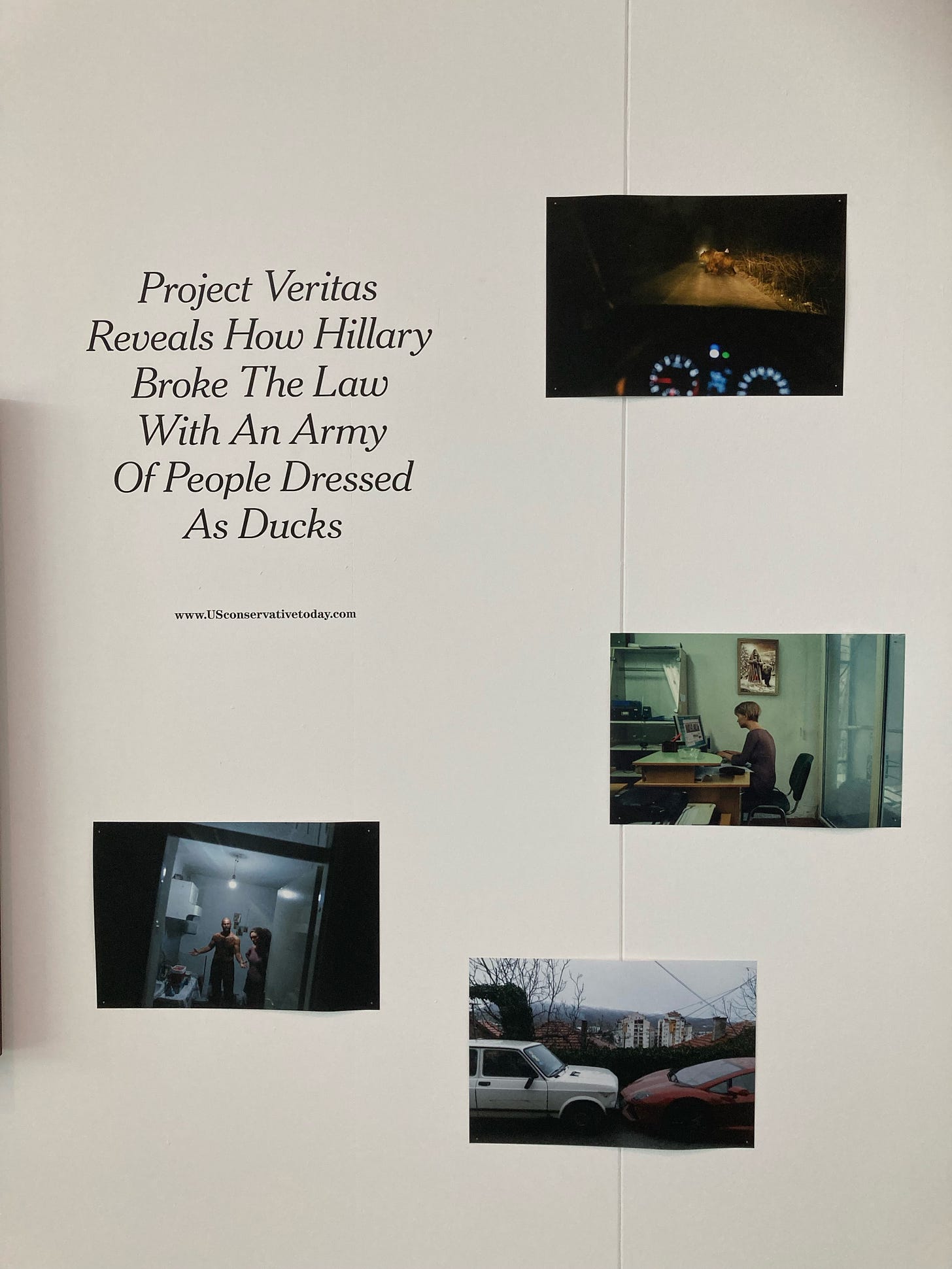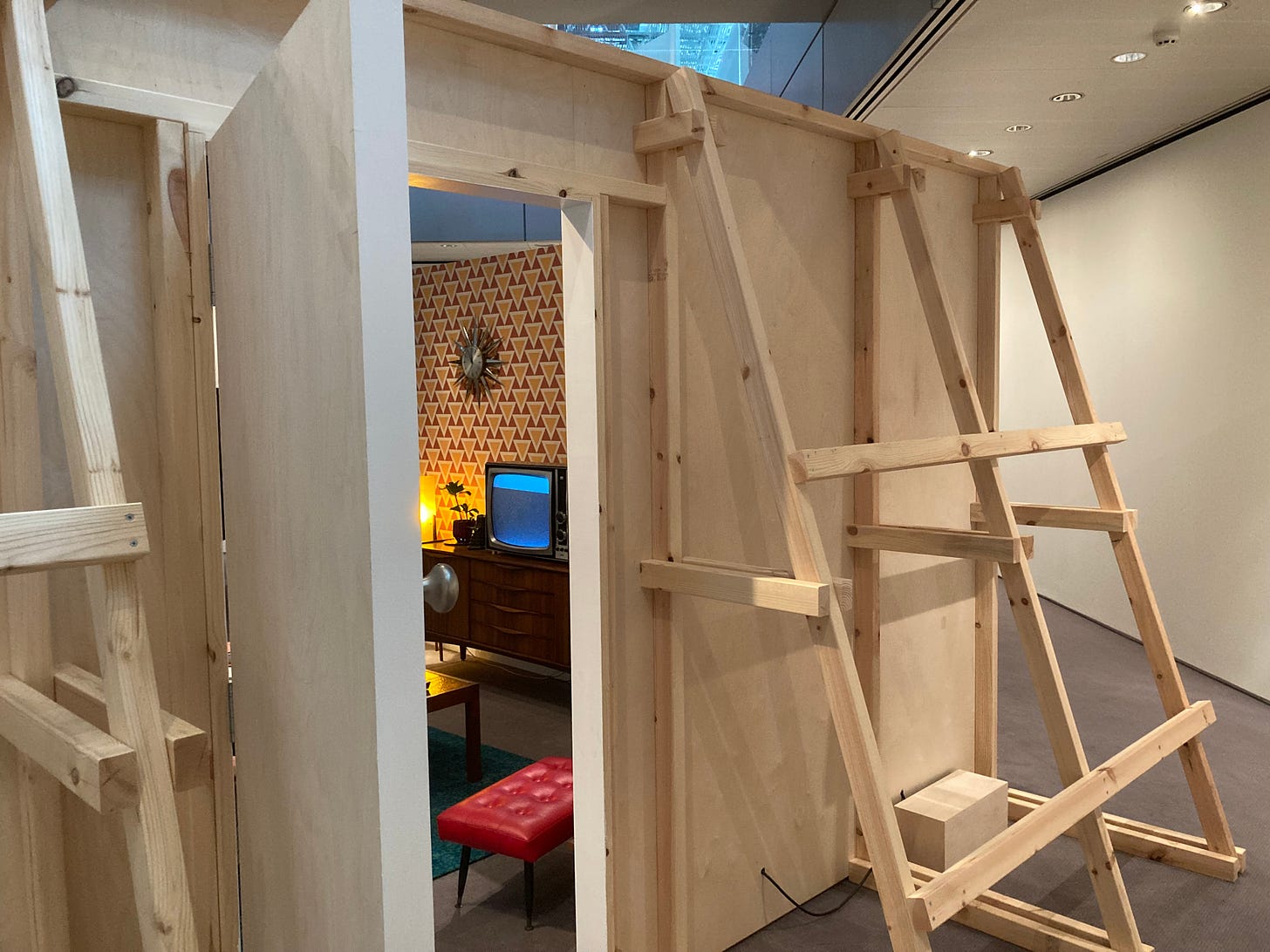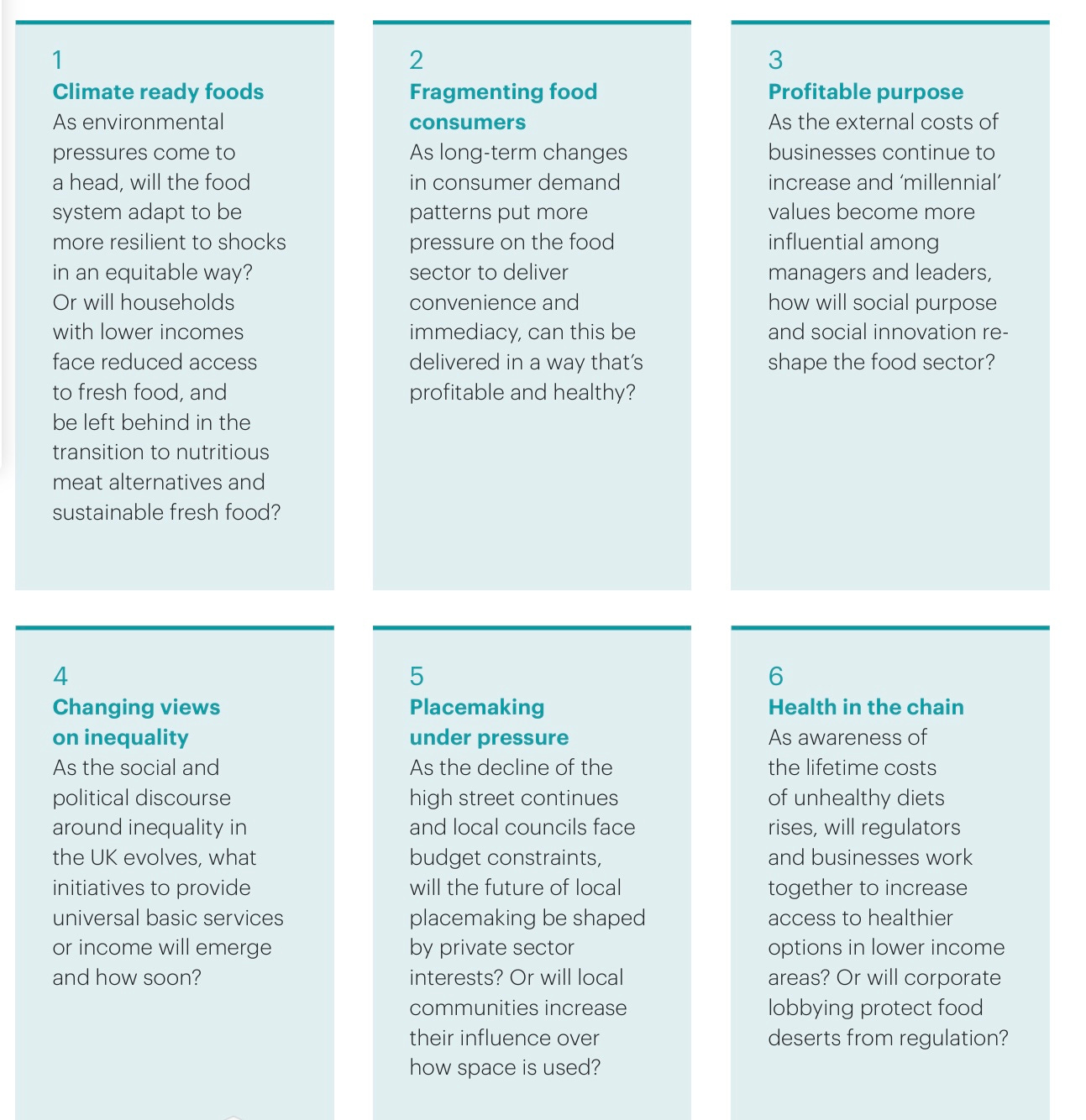6 June 2024. Fakes | Futures
Making fakes. // Futures landscapes, scenarios, and futures cognition. [#578]
Welcome to Just Two Things, which I try to publish three days a week. Some links may also appear on my blog from time to time. Links to the main articles are in cross-heads as well as the story. A reminder that if you don’t see Just Two Things in your inbox, it might have been routed to your spam filter. Comments are open.
Apologies for the slight break. I had a family commitment.
1: Making fakes
At the Sainsbury Centre for the Visual Arts in Norwich at the moment there is a collection of exhibitions themed around the idea of ’What Is Truth?’. The cornerstones of this are a collection of photographs which are intended to raise these questions, and an installation, In Event of Moon Disaster, based on the Moon landings in 1969.
The photography exhibition does include some well-known fakes—for example Robert Capa’s famous Spanish Civil War photo of a soldier apparently dying. It’s known now that the photograph was taken miles behind the front lines, even if there is an underlying truth here—soldiers were fighting and dying for the Republican cause, and not that far away.
(Robert Capa (1936), The Falling Soldier. Getty.edu)
There are a couple of versions of the Russian soldiers raising the Soviet flag over Berlin. A column of smoke has been added for visual effect, and a second watch on a wrist has been scratched out, in case the viewer might think it had been looted. There’s the original of a Soviet picture in which various people were later airbrushed out of the picture, and of history.
These are interesting, but familiar, and maybe don’t stretch us that much.
More interesting is the work of the photographer Jonas Bendiksen, who became interested in the town of Veles, in North Macedonia, in 2019 and 2020. This is why (from the exhibition information):
Veles is a provincial town in North Macedonia that became a hub for 'fake news' production in the 2016 US presidential election. Tech-savvy local youths created hundreds of websites posing as American political news portals with the intention of earning quick money from viewer ad clicks. As the Veles fake news articles spread via Facebook and Twitter many of these 'news hackers' made substantial sums and it is said that the sites may have contributed to the election of Donald Trump.
The images combined their ‘fake news’ stories with photographs that were apparently of fake news operations at work. And looking at it dispassionately, it’s almost a perfect model of how digital information capitalism works: clicks mean bucks.
(Images: Jonas Bendiksen)
(Images: Jonas Bendiksen)
There’s a catch, however. The people you see in these pictures are not real either:
Bendiksen travelled to Veles in 2019 and 2020 to explore this unlikely hub of misinformation. But whilst the resulting images may look like conventional documentary photography, each one is in fact a manipulation. Every character is a digital 3D model avatar inserted into otherwise empty pictures.
In Event of Moon Disaster, by the artists Halsey Burgund and Francesca Panetta, takes us into an alternative history of the moon landings via the application of deep fake technology.
Their video sequence constructs President Nixon reading a script that had been prepared for him in the event that Armstrong and Aldrin got stranded on the moon and were unable to return to Apollo 11. The script is real: it was written for Nixon by William Safire. But both video and voice are convincing deep fakes. And the President’s announcement is packaged with some period CBS News, with Walter Cronkite telling us that we are going over now to the White House,
The speech itself is a fine piece of work. Here’s an extract:
These two men are laying down their lives in mankind's most noble goal: the search for truth and understanding.
They will be mourned by their families and friends; they will be mourned by their nation; they will be mourned by the people of the world; they will be mourned by a Mother Earth that dared send two of her sons into the unknown.
In their exploration, they stirred the people of the world to feel as one; in their sacrifice, they bind more tightly the brotherhood of man.
In ancient days, men looked at stars and saw their heroes in the constellations: In modern times, we do much the same, but our heroes are epic men of flesh and blood.
And for clarity, I should also say that the ‘set’ that surrounds the work in the Sainsbury Centre is their contribution to this version of the installation. The wallpaper design, based on a ‘60s wallpaper in its collection, is by Giles Round, and the room staging is by Les Chappell and Lene Premilovich. Obviously this all contributes to the apparent authenticity of the piece.
(From ‘In Event of Moon Disaster’, (2020), Halsey Burgund and Francesca Panetta/ Sainsbury Centre for the Visual Arts. Photo: Andrew Curry. CC BY-NC-SA 4.0)
(From ‘In Event of Moon Disaster’, (2020), Halsey Burgund and Francesca Panetta/ Sainsbury Centre for the Visual Arts. Photo: Andrew Curry. CC BY-NC-SA 4.0)
The artists are well aware that the moon landing has been the subject of any number of conspiracy theories (a version involving Mars landings was also fictionalised in a Hollywood film) and their intention is not to question the authenticity of the event. Instead they want us to think about the relative ease now of using digital technologies to construct alternative facts.
There’s a short associated video in which various experts offer their perspectives. Among them, the computer scientist Siwei Lyu commends the quality of the fake—you can’t see the usual deepfake artefacts, he says, although I’d add that the artists may have been helped by simulating a 525-line black and white picture.1
And the lawyer and computer scientist Jonathan Zittrain muses on the technique as a way of inviting people to reflect on the values of alternative reality—and quickly adds, “so long, of course, as they know it.”
(Constructed reality. Photo: Andrew Curry. CC BY-NC-SA 4.0)
The ‘What Is Truth?’ Exhibition is on in Norwich until October.
2: Futures landscapes, scenarios, and futures cognition
I’ve been wrestling with a number of issues that seem to get ignored or even airbrushed out of the futures literature for a few years now, but not in a very systematic way. Some of these go directly against the received wisdom that is rehearsed in the futures literature: that there are no future facts, for example, or that time passes (both of these are from Wendell Bell’s list of things that futurists agree on).
The third area that comes up here is that we don’t really have a good idea of how people process and assess futures ideas, although there is an emerging literature here. But the kinds of work that neuroscientists do to explore this tends not to map well onto the kinds of imagined futures that futurists typically want people to engage with.
As it happens, some of these issues have converged around a presentation I’m giving (with my former colleague Charlie Warwick) this week in Trento at a conference on the theme of ‘The Discovery of the Future’. Another former colleague, Joe Ballantyne, has also been involved in developing the thinking.
Futures landscape
The presentation has a pragmatic part and a theoretical part. The pragmatic part is about a methodology that the three of us were involved in developing at The Futures Company which we currently call ‘the futures landscape’. The Futures Company used to call this ‘Futures Dynamics’, but I think they also trademarked this description, so I’m not going to call it that here.
The rest of this post is based on a combination of the abstract we submitted to the conference and on the presentation we developed.
It’s also worth saying that the reason the theoretical questions came up is because—over something more than a decade now—we have noticed that ‘futures landscapes’ are easier for clients to grasp, and to use, than futures approaches based on scenarios. This was a completely empirical finding, which we have been trying to understand better theoretically.
And certainly in my experience, scenarios are hard for humans to work with. We’re not skilled at juggling multiple possible futures in our heads at the same time, and we find it difficult to navigate from a set of scenarios to a set of implications, even with expert help.
Morphological futures
The futures landscape approach has now been deployed with dozens of organisations, commercial and non-commercial. It has been applied by different practitioners in a wide range of different settings and to a wide range of different ends.
The notion of the ‘landscape’ is a cousin of morphological futures, and has a similar starting point. The landscape typically emerges inductively from a scan, and somewhere between four and seven ‘subsystems’ are identified that are part of the overall system but are different enough to exhibit different behaviours and potentially involve different actors with different interests.
(Six domains for urban food futures in London. SOIF/Shift (2021, ‘Urban Food Futures’, Impact on Urban Health)
These sub-systems or domains are analysed both narratively and through systems tools such as causal loops to ensure their robustness and to ensure that we understand patterns of change. (It was this feature that led to the ‘dynamics’ label at The Futures Company.)
In turn, this combination of narratives and loops makes it possible to identify and analyse both critical issues and emerging opportunities and risks in the overall landscape.
(Systems loops and analysis for the ‘Profitable purpose’ domain. SOIF/Shift (2021, ‘Urban Food Futures’, Impact on Urban Health)
Cognitive legibility
In practice, the ‘futures landscape’ approach improves the cognitive legibility of futures work by making it easier to move from the sense-making stage of the work to the investigation of implications. However, it may reduce the range of possible futures that are opened up for exploration, although there are tools that can mitigate this. Equally, however, the process ensures that weak signals of change remain more visible.
This is more than a set of technical distinctions. We hypothesise that scenarios are processed cognitively as “possible futures”, and as a result have a weak bridge to present action. The futures landscape, in contrast, is processed as an “emergent present”, and therefore has a stronger bridge.
At the same time, our experience as practitioners is that the futures landscape approach also makes more straightforward the socialisation of the futures-based insights that have been developed. Explanations of emerging futures patterns, and the opportunities and issues arising from them, are more comprehensible to those who have not participated in the process. As a result this can create greater organisational alignment around emerging issues and opportunities, and how to respond.
The ‘thick present’
To some extent, as with a scenarios project, the process is often the product. But in organisations senior time and attention is always short. They are unlikely to engage in the process, but their engagement in understanding and processing the outcomes is necessary for effective outcomes from the work. And they seem to find it easier to understand what might be called the “thick present” of the futures landscape than the possible futures of a scenarios set.
The ‘thick present’ is a idea that emerged in futures work around the time that people started to reimagine the sources of future change as being embedded in the present as “latents”, or possible futures. The “thick present” (for example see Roberto Poli, 2011) is contrasted with the idea of the present as a thin line that divides past and future. Instead, the present is entangled with both past and future. This makes sense to me: there are objects in the present that come from the past and we can infer, David Hume’s thought experiment notwithstanding, are likely to extend into the future (the built environment, people we know, the government and other social institutions and organisations, for example). The future is not radically open.
This connects to some of our understanding of cognition of futures work. One of the issues about our notions of time is that while we experience times as “passing”, the equations that describe the universe are neutral on time. They work just the same whether time goes backwards or forwards. This is a subject for another day, but suffice to say here that it is an area that has suddenly got a lot of attention by neuroscientists since the mid-2000s.
Memories and futures
It turns out that Ingvar’s notion of “the memory of the future” was about right. Broad brush, but the area of the brain that constructs our memories largely overlaps with the area that imagines the future—and also the bit that is empathetic to the imagined circumstances of other people. Maree Conway and Maureen Rheeman have offered futures reviews of this.
Suddendorf and colleagues argue that humans have the capacity for “mental time travel”, and that this confers an evolutionary advantage. (Their book was reviewed by Jorge Camacho). But it’s worth saying that the neuroscience experiments here tend to involve asking people to imagine a trip in the next month rather than a world run on, say, communitarian principles in 2050.
More tentatively, it also seems to be the case the episodic memory imagines future (and past) events, and then it is evaluated by semantic memory, which represents the world as we know it, symbolically speaking.
There’s another layer to all of this, which is about organisational cognition, which is a piece for another time, since this is already too long. But our emerging hypothesis is that because the futures landscape effectively creates a “thick present”, it builds a bridge between episodic memory—“yes, I can imagine this emerging future”—and semantic memory—“I am testing it against what I already know of emerging trends in the world around me”.2 And it seems at least possible that “possible futures”, like scenarios, fail this test.
---
j2t#578
If you are enjoying Just Two Things, please do send it on to a friend or colleague.
Although I notice that there is a colour version of some of the film online. I don’t know which version Siwei Lyu saw.
Yes, the language about “bridge” links back to a famous phrase of Pierre Wack’s about ‘decision scenarios’ needing to build a bridge back to the everyday concerns of managers.








